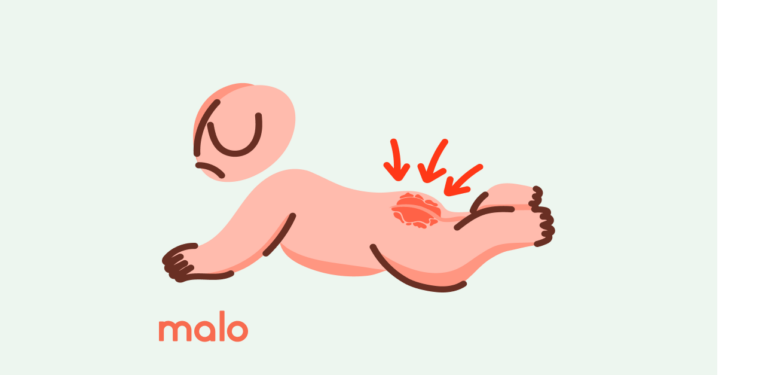From the very first attempts to grasp your finger to that magical moment when a child threads a tiny bead or carefully turns a book’s page, fine motor skills shape childhood—and in truth, follow us through every stage of life. Yet, understanding the subtle symphony behind actions as ordinary as holding a pencil or fastening a shirt button often stirs anxiety, even among the most attentive parents. Is my toddler’s grip normal? Should my six-year-old’s handwriting look neater? Anxiety bubbles, questions multiply—sometimes, solutions seem elusive. Between the physical world and a growing mind, fine motor skills are the golden bridge unlocking independence, self-confidence, and daily achievements.
So what exactly sets fine motor skills apart, and what can support their blossoming in your child? From developmental milestones and red flags to practical, home-friendly exercises (yes, without the need for fancy equipment) and new advances in therapy, each aspect invites curiosity and relief in equal measure. Let’s dive into what shapes those tiny hands, how daily life weaves lessons, and why celebrating every playful challenge is more valuable than chasing a mythical ideal.
What are fine motor skills? Understanding the basics and the big impact
When you watch a child delicately pinch a raisin or struggle (sometimes stubbornly) to button a shirt, you’re witnessing fine motor skills at work—a sophisticated melding of small muscle movements, especially those involving the hands and fingers, but also occasionally the toes. These aren’t just random actions; they’re the visible signs of fine-tuned coordination between muscles, nerves, and the brain, a ballet performed mostly on autopilot and yet deeply influenced by genetics, health, and experience.
So much hinges on the pincer grasp—that moment when thumb and forefinger create a miniature clamp, able to pick up grains of rice, tiny lego pieces, or puzzle parts. This grasp is more than a simple milestone; it’s a testament to neurological maturity and sets up a lifelong journey of dexterity, autonomy, and self-expression.
But how do fine motor skills differ from the sweeping arcs of running or jumping? Those are gross motor skills—the domain of big muscle groups in arms, legs, or back. Fine motor skills, meanwhile, sidestep into the world of detail, enabling precise actions like writing, drawing, or handling cutlery. Although gross motor skills usually appear first, the two work in harmony: sturdy balance and posture from core muscles provide the stable base for fingers to dance with control and confidence.
Fine motor skills milestones: the journey from infant to adult
Infants (0–12 months): grasping begins
It starts with instinct—a reflex grip that gradually yields to conscious, willed movements. By three months, tiny fists begin to uncurl, exploring the world by midline play—hands meeting at the centre, fingers tentatively opening. At six months, most infants graduate to a palmar grasp, using the whole hand to collect toys or food pieces. The crescendo arrives at 9 to 12 months, as the much-anticipated pincer grasp appears, allowing little fingers to pick up even minuscule crumbs. Delays or unusual hand postures, such as persistent clenched fists past three months or a lack of object transfer by seven months, may signal underlying neurological conditions or muscular challenges, sometimes prompting a gentle word with your child’s doctor.
Toddlers and preschoolers (1–5 years): practice, mastery, and mishaps
Watch a toddler at play and every clumsy stacking of blocks or scribbled line is an act of fine motor learning. Hand dominance emerges, attempts at buttoning, zipping, and self-feeding become bolder—even when spoons do more flipping than delivering food. Preschoolers, with multiplying confidence, wield scissors, string beads, twist bottle caps, and scrawl shapes. Repetition is key, and play—free, messy, light-hearted—serves as the best teacher.
School-age (6–12 years): handwriting and precision
Here, handwriting takes center stage, demanding sustained control and endurance. Cutting neatly, using rulers, manipulating intricate toys, or learning to tie shoelaces: each step may feel laborious for some, easy for others. Persistent avoidance, visible frustration, or excessive fatigue can point toward developmental coordination disorders, undiagnosed visual challenges, or neurological concerns. Early professional advice reassures as much as it diagnoses.
Adolescents, adults, and seniors: adapting and persevering
In later years, fine motor skills underpin academic demands, hobbies, employability, and even self-care. Typing, handling tools or musical instruments, painting, or preparing meals—such skills are refined through practice but never entirely static. With age, medical conditions (like arthritis) may challenge dexterity, and here, adaptive tools—thicker pen barrels, easy-grip utensils—help maintain autonomy with simple, effective adjustments.
Why do fine motor skills matter so much?
Consider daily rituals—getting dressed, eating, brushing teeth, writing homework, threading a needle—all powered by intricate, repetitive hand movements. Mastery brings more than just ease; it shapes self-esteem, academic participation, and social interactions. Children proud of their independence in self-care, or able to share in art and play with friends, often overflow with confidence—a resilience that spills into every part of life.
Medically, precise fine motor function ties directly to the brain’s maturation and the integrity of neuromuscular circuits. Deficits here sometimes unmask broader health concerns (underlying neurological or genetic syndromes, nutritional deficiencies impacting muscle strength, or even environmental factors that limit exposure to stimulating activities).
What shapes fine motor skills? Influencers and obstacles
- Genetics and health status: Preterm birth, low muscle tone (hypotonia), or genetic conditions like Down syndrome can produce delays or alternate development timelines.
- Nutrition: Adequate protein, vitamins, and minerals feed both brain and muscle growth. Deficiencies can subtly (or sometimes dramatically) slow progress.
- Opportunities for practice: Hands-on play with textured toys, art, or kitchen tasks build neural pathways and hand strength.
- Medical or developmental disorders: Some children face additional hurdles: cerebral palsy, autism spectrum disorder, or sensory processing difficulties change how fine motor learning unfolds. Early screening and supportive therapies can re-balance the odds.
Parents often ask—do delays mean trouble long-term? Sometimes, but not always. Each child’s rhythm is unique; what matters most is consistency in practice and compassionate scaffolding at home and school.
Recognising fine motor skill challenges: what to watch for
Warning signs are often subtle: a clear preference for running and climbing over puzzles or colouring, obvious struggle or avoidance with simple dressing tasks, slow or awkward writing, or even distress during art or craft activities. While some hesitation is perfectly normal, regressive hand use or pronounced difficulties should never be ignored.
Formal diagnoses—developmental coordination disorder, sensory processing disorder, specific neurological or muscular conditions—require medical input, typically a team effort between paediatricians, therapists, and educators.
Seek a paediatrician’s opinion if practical difficulties persist or escalate. Occupational therapists can offer tailored assessments, targeted exercises, and specific assistive devices—from pencil grips to Velcro fasteners—to make daily life smoother.
Practical activities for nurturing fine motor skills at every stage
For infants and young toddlers
- Encourage reaching for toys, shaking rattles, and grasping textured blocks
- Spread tiny pieces of soft food on a table to spark the pincer grasp
- Demonstrate transferring blocks or soft objects hand-to-hand
For toddlers (1–3 years)
- Provide spoons, tongs, or cups for transferring beads or dry pasta
- Offer safe dough or clay for pinching, rolling, squishing, and shaping
- Simple puzzles with chubby pieces build hand-eye precision
For preschoolers (3 years and above)
- Interlocking blocks (think Lego) encourage detailed manipulation
- Child-safe scissors for practising snipping strengthen finger control
- Crayons and colouring, focussing on proper grip pattern
For school-age children
- Activities like board games with tokens and pieces
- Simple cooking: stirring, pouring, kneading dough
- Practice in tying shoelaces, opening bottles, using rulers or keyboards
For teens, adults, and seniors
- Typing, painting, playing music or assembling small gadgets
- Crafts: embroidery, knitting, gardening—any task demanding focus and detail
- For older adults, targeted hand exercises and adaptive tools keep independence within reach
Science, technology, and evolving therapies
Scientific evidence is clear—repetitive, meaningful hand exercises help construct new neural pathways at any age. Occupational therapy blends visual-motor integration techniques, playful challenges, and real-world activities, often augmented today by adaptive technologies. Virtual reality, interactive apps, and even motion tracking enable more personalised, engaging therapy than ever.
Family and teacher collaboration guarantees children receive consistent messages and gentle, patient encouragement. Goals need not be grand; daily acts—self-feeding, tidying, dressing—become opportunities for micro-achievements, each celebrated, never rushed.
Key Takeaways
- Fine motor skills underpin daily independence—eating, dressing, writing, and more—beginning in infancy and evolving throughout life
- Each developmental stage features its own milestones, but children progress at unique paces; gentle consistency always wins over pressure
- Medical conditions (neurological, genetic, sensory) may challenge progress, but modern therapies and simple home activities provide robust avenues for support
- Observation, open communication with professionals, and regular, purposeful play unlock the best outcomes
- Celebrate every step, and remember, support is always at hand. The Heloa app offers access to personalised guidance and free health questionnaires for your child, connecting you to a network of trusted expertise
Questions Parents Ask
What are some easy activities to improve fine motor skills at home?
No need for expensive gadgets or elaborate setups. Activities like using kitchen tongs to shift cotton balls, kneading chapati dough together, letting your child stack building blocks, or stringing large beads deliver real impact. Encouraging sorting of lentils or picking up coins, simple colouring, or even helping out with folding laundry brings practice into the natural flow of daily life. Small, consistent efforts shape progress—little by little.
What toys or tools support fine motor development?
Look for building sets, pegboards, puzzles with chunky handles, thick crayons, or squeezy balls. Modelling clay, spinners, and construction kits help hands grow strong and nimble. As children move forward, challenge with games that involve sorting, building, or fitting small parts. These activities nurture both confidence and dexterity.
Can fine motor skills affect my child’s independence?
Yes—success in tying shoes, eating with a spoon, getting dressed, or writing homework translates directly into a sense of pride and self-assurance. With time, patient encouragement, and repeated small victories, children flourish—at home, in school, and beyond. Everyone’s pace may differ, but gentle, positive support shifts hurdles into stepping stones.









